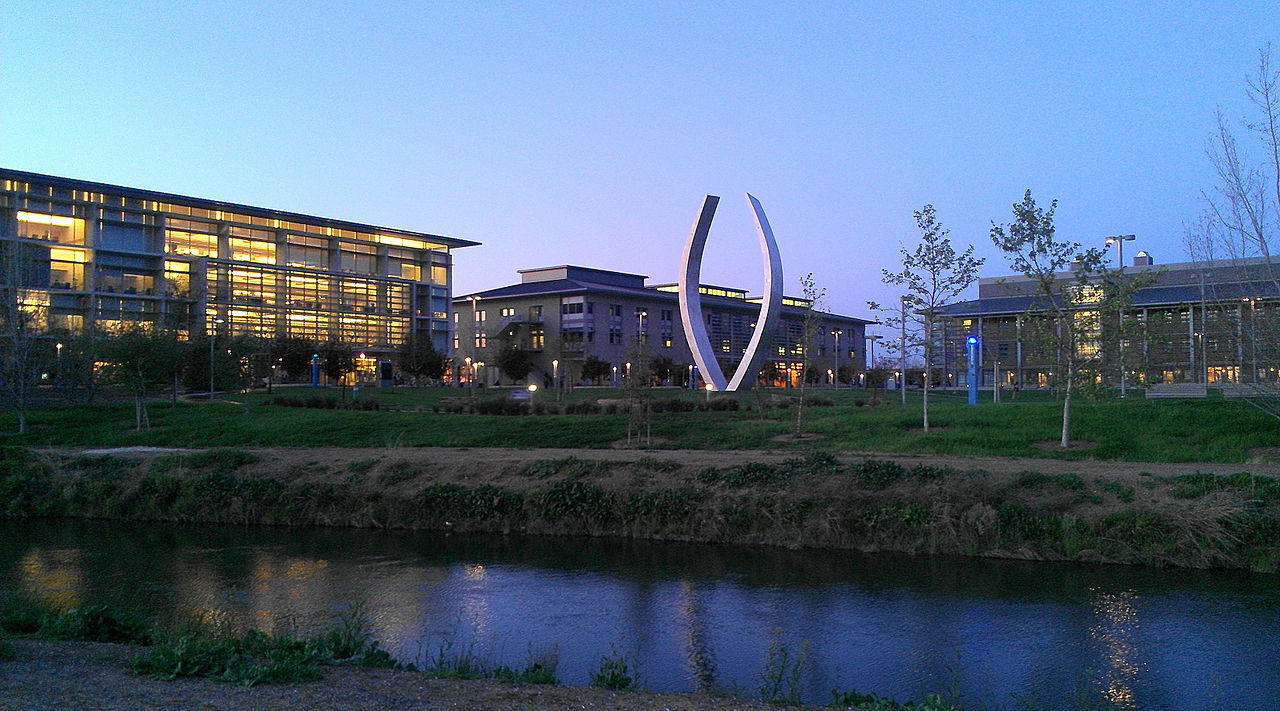The University of California, Merced (UC Merced or UCM), is the tenth and newest of the University of California campuses. It is located in the San Joaquin Valley in Merced County, California, just northeast of the city of Merced, and between Modesto, California and Fresno, California. Most UC Merced students are from California with enrollment nearly evenly divided between Southern California, the Central Valley, and Northern California.
UC Merced claims to be the only institution in the United States to have all of its buildings on campus to be LEED certified. Its Triple Net Zero Commitment is expected to create zero net landfill waste and zero net greenhouse gas emissions by the year 2020.
The campus is bounded by Lake Yosemite on one side, and two irrigation canals run through the campus. The campus master plan was developed by Skidmore, Owings & Merrill, its initial infrastructure by Arup, and its first buildings were designed by Skidmore, Owings & Merrill, Thomas Hacker and Associates, and EHDD Architecture. The library and central power plant have been classified as Leadership in Energy and Environmental Design Gold structures in terms of their high energy efficiency and low environmental impact. The campus is located about seven miles (11 km) north of downtown Merced in the middle of a cattle ranch.
Rather than build on 40 acres (16 ha) of protected land east of Lake Yosemite, where endangered fairy shrimp hatch in vernal pools, the school has built on a 230-acre (93 ha) parcel of grazing land south of campus, under a revised layout. The revised plan covers a total of 810 acres (330 ha) rather than the original 910 acres (370 ha) proposed in 2000.The new design was expected to impact a total of 81 acres (33 ha) of native wetlands in the region compared to the 121 acres (49 ha) forecast in the 2000 footprint.
